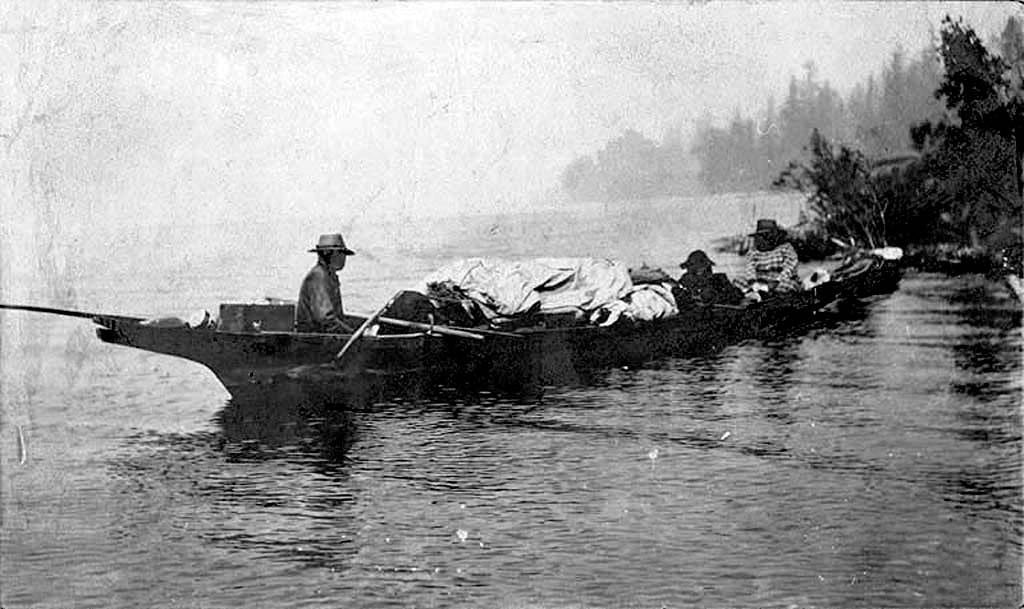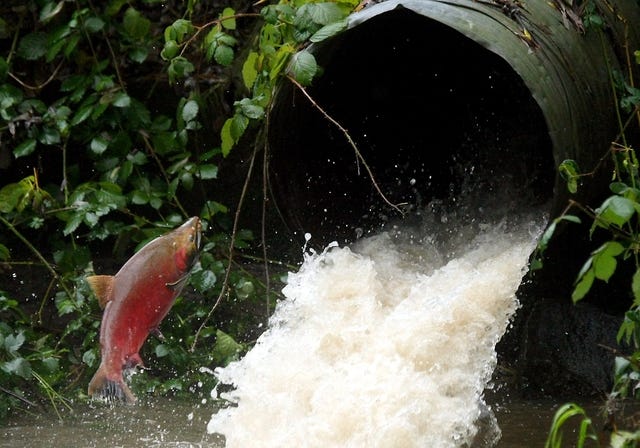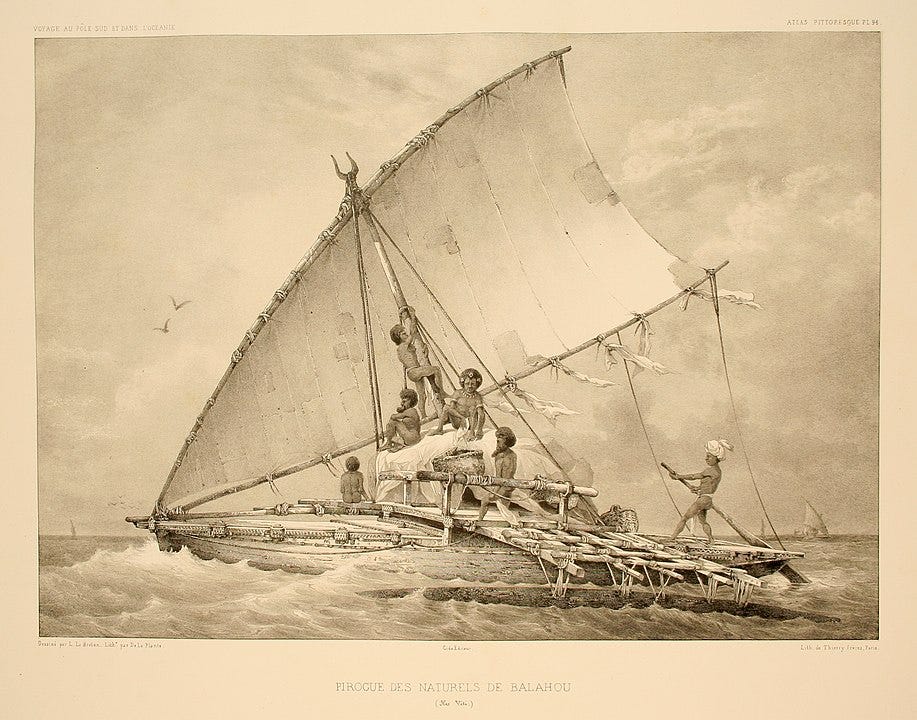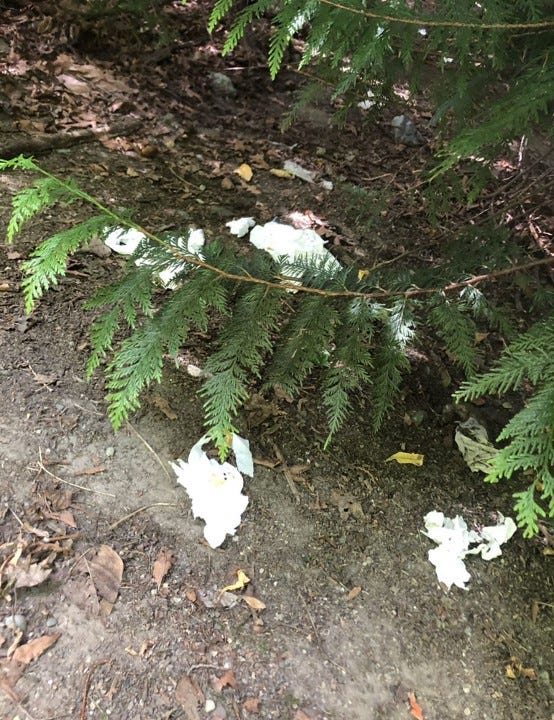Hello Interactors,
This is the last post on the subject of physical geography. Starting next week and through the fall I’ll be digging into economic geography and how the interaction of people and place relates to inequality, instability, and sustainability of local and global economies.
This final post of the season ushers in a windy wet fall by focusing on the forces of wind and water; and our sometimes intimate relationships with nature.
As interactors, you’re special individuals self-selected to be a part of an evolutionary journey. You’re also members of an attentive community so I welcome your participation.
Please leave your comments below or email me directly.
Now let’s go…
PUZZLING PILES IN THE PARK
I paddled my kayak two miles across a calm Lake Washington this week to a park where I water baby native plants. I realized I move through fluid water at about the same pace as I walk on solid ground. Kayaking is a lot like swimming that way. But dryer. You’re in the water extending one arm forward, grabbing water with the paddle, pulling it behind you while pushing your other arm forward so it can do the same. I lean sideways slightly on each extension rotating the boat, extending its length, rocking back and forth with each stroke. Just like swimming. But dryer.

I’m not much of a misty spiritual type, but there is a oneness with water that I experience when swimming or kayaking that is hard to explain. I feel it when I sail too. So does the boat. Sailboats hum with vibration when the force of wind on the sail is balanced by the forces acting on the keel underwater. These invisible forces propel the boat forward, but can also slow it down.
Polynesians were some of the best, if not the best, sailors and navigators in the world. To sense the subtle cues of shifts in the current on the vast Pacific waters, the men would put the tiller between their legs and let the most sensitive nerves in their body sense the changes. Their scrotum. Now that’s being one with your boat – and the water.
Most people have lost touch with this kind of intimacy with nature. The closer we get to embracing urban life, the more distant nature recedes. I’m reminded of this every time I beach my kayak at the waterfront park I’m helping to restore. I pull the boat ashore, strap on my work gloves, slip on my branded Green Kirkland hat, and set out to water baby native plants under a canopy of firs and old growth cotton woods. But invariably, in my periphery, I’m distracted by a bleach-white pile of toilet paper clumped just beyond the trail.
People pooping in public parks is as much pernicious as it is puzzling. One day I became curious how widespread in the park this was. Perhaps this stand of trees is just a particularly pleasant place to poop. So I walked the park. Crossing over a footbridge, I spotted two juice boxes tossed to the side of the creek. I walked down the bank and under the bridge to see more wads of white waste.
I collected the juice boxes and tissue and heard a mom on the bridge say to her kids, “Oh look, that nice man is picking up litter!” I had a moment of pride bolt through me, but it was displaced by rage that almost made me want to holler back, “Yeah, so why don’t you and your kids get your butts down here and help!” I didn’t, of course. But I wanted to yell at somebody.
As I walked further up the creek, I could see the bank leading up to the restrooms was spotted with white. The closer I got to the building, the more clumps of toilet paper I found. What compels people to walk into a restroom stall, pull more toilet paper from the roll than a single human needs to wipe their fanny, stride outside and into the woods, and poop. Or pee. I found more evidence of pee-pee than poo-poo. Which tells me it’s those with the internal hardware doing most of the doo-dooing in the dirt.
I suppose you could cry, COVID! And it’s true. I could see where some would be concerned with being in a public restroom for too long. And let’s face it, it’s nicer in the woods than in a public facility. I’d rather be looking at a tree than a stall door with graffiti etched into it; breathing air that surrounds with a nasty stench to it. But park staffers tell me it was happening long before Covid and it’s been getting worse. While doggy doo-doo is their number one park problem, a close second is public plops from people.
The BBC wrote a piece about these dastardly deeds of the terrible turds. They interviewed a forensic psychologist who gets called onto scenes of crimes where someone has dropped some dung. The first thing he asks the police officer is this, “Is it soft or hard?” They think this psychologist is in need of psychiatry. It’s the number one indicator of intent. If it’s soft, the person was anxious, stressed, and realized they either drop trough or poo their pants. So they landed a pile in the middle of the living room and then made off with the TV. If it’s hard, then this person is most likely angry and bitter about the world and this is their way of expressing it.
He says the reasons for these episodes range from anxiety, alcohol, illness, rage, or, as one anger management expert put it, people want to make a statement: “Life is shit, so stand in it.”
Either way, these psychologists warn us that shaming is the last thing we should do to remedy this rectal ruse. In any form, it’s a sign of anti-social behavior that most likely stems from some kind of trauma in these people’s lives. I’ve stopped picking it up and instead snap a photo with a description of the location. The city is trying to track occurrences so they can be more targeted in their solutions. I’ve also come to muster compassion for the sources of these pearly piles of paper that pop out amidst the brown brush.
WIND AND WATER
This park experience has offered me a whole new angle on the interaction of people and place. Defecating in public I think we’d all agree is a social taboo. Taboo is Polynesian word. It’s formed from the word ta – to mark and pu – an adverb of intensity. It can be spelled tabu or tapu. The Polynesians used this word in many contexts, but one was conservation of natural resources. They would mark reefs, groves, plants, and animals as taboo when they became overfished or overly picked, plucked, or hunted.
Numerous anthropologists noted this elsewhere in the world among Indigenous societies; typically with religious overtones to sacred edicts. The Kayapo people of Brazil have religious sanctions as a way of managing groves of trees. Maya’s Huastic people protected sacred groves as did Moroccans and the Chinese.
China’s ancient practice of feng shui 风水 is alive today. Search for feng shui on Amazon books and you’ll be greeted with over 40,000 books to choose from. Professor Emeritus of Anthropology and cultural ecologist, Gene Anderson, spent years researching behavior of poor laborers in Hong Kong. His first encounter with feng shui was in 1965. A hospital was being built on a nearby hill where he was staying. As he interacted with area farmers and laborers, they would remark on how bad it was to build there. The elders would tell him, “This is very bad; the construction has cut the dragon’s pulse.” He studiously noted the comment, but found it an odd thing to say.
Soon after, a typhoon struck. Two feet of rain in two days brought water that turned to mud as it came gushing down the mountain. The newly built hospital foundation was wiped out and homes were buried in mud at the foot of the hill. The next time he saw his farmer friends, they said, “See? This is what happens when you cut the dragon’s pulse.” Geologists would say it was “slope failure” due to “over steepening.”
After ruminating on the catastrophe, Anderson wrote1,
“A light went on in my head. The Chinese, pragmatic to the core, had described the phenomenon in terms strange to me; but the phenomenon they described was perfectly real. I reflected that the geologists’ terms “oversteepening” and “slope failure” were not much more empirically verifiable than the dragon. Any Chinese peasant would find them even stranger than I had found that eminent serpent, since I had already learned from reading that ancient Chinese saw dragons in the scaly, ridged contours of mountain ranges.”

Anderson never thought of facts the same way again. Feng shui guides people to not put houses on a slope or rise. A year later, Anderson observed the effects of another natural disaster – the great floods of 1966. He noticed the only houses to survive, were those that obeyed the principles of feng shui.
While he had ample empirical evidence that feng shui works, he could never quite square with the mystical connotations. He had trouble relating to “dragons in the hills”, “tigers in the ridges”, “veins of subtle circulating force”, and “wavelike flows of good and bad luck.” But with time, he’s discovered and appreciated the interdependence of hard-nosed pragmatic empiricism and the more spiritual cosmology of ancient Chinese tradition.
The literal meaning of feng shui combines “wind” and “water”. It is the ancient Chinese science of how people interact with place in a way that minimizes damage from natural forces. It guides the planning of houses, buildings, villages as well as ways of getting around: roads, bridges, waterways, and highways. Natural forces in traditional Chinese culture is called ch’i (qi 气) – a force vital to life but can’t be seen. It’s literal meaning is “air” or “breath”; both invisible vital forces that should not be impeded. Feng shui exposes principles that avoid blocking or disrupting that invisible vital force – or ch’i.
Wind, in my mind, is the perfect spiritual and empirical example. You can’t see wind, but it’s best not to impede it. And when I’m sailing, wind can bring bad luck – no wind, too much wind, or wind in an unhelpful direction. And it can also bring good luck – a consistent gentle wind blowing in a helpful direction. Harnessing and channeling the invisible force of wind balances forces between the sail and the keel causing fluid turbulence that makes a boat hum and a sailor smile. (Though the turbulence can also create drag, so is best appreciated only momentarily if you’re in a hurry!)
Water holds both empirical and mystical and metaphorical truths as well. One look at a drainage map of any massive river system reveals a fractal-like network of tributaries, creeks, and streams that feed into progressively larger rivers. Like the capillaries and veins that gradually grow in diameter as they approach the two largest veins in our bodies – the superior and inferior vena cavae. These connect to the heart that pulses at precisely the right rhythm to send blood all the way to the extremities where the smallest capillaries in mammals deliver oxygen and nutrients to surrounding cells.
River systems in tidal zones and floodplains work much like our circulatory systems. The natural cycle of seasonal drought and floods or ebb and flow of tides distribute water, nutrients, and organisms through what is known as a flood pulse. And like wind, these forces cannot be seen, are best not impeded, and can be described by many as bringing good or bad luck. A drought stricken flood plain flush with forgotten water is good luck for plants and animals reliant on the pulse. A tidal rush from a tsunami is nothing but bad luck.
SHIT HAPPENS
It’s not hard to imagine an undulating mountain ridge with piercing rocks silhouetted against the sky appearing like the scales on the back of a curvaceous dragon. It’s also not hard to imagine the streams running through the steep crevices and valleys and into the flood plains; pulsing like the veins of a mountain dragon. Describing naturally occurring forces this way is both pragmatic and poetic. Empirical and mystical. Especially in the absence of any other explanation.
But the first Western scholars to encounter these people lacked such imagination and grace. J. J. M. de Groot was one such person. He was a Dutch missionary and religion instructor at Leiden University in Germany. Here’s how he described what he heard and observed when he spent time in China in the 1800s2,
“Feng shui is a mere chaos of childish absurdities and refined mysticism, cemented together, by sophistic reasonings, into a system, which is in reality a ridiculous caricature of science.”
These words resonated with other Western explorers, scholars, and writers so they copied them. They considered feng shui a form of superstition or religion; a belief that propagated through generations of text books throughout the Western world. But in recent decades that has changed. Most scholars now regard feng shui as scientific. In 1996, Gene Anderson described it like this: “a system of empirical observations and pragmatic knowledge, bound together by an overarching theory that is supposed to be naturalistic.”
If you’ve ever been backpacking, you’ve likely pooped in the woods. My climbing friend told me you don’t really have a climbing partner until you’ve pooped next them while dangling from a rope on the face of a cliff high above the mountain floor into what they call a poop-tube. And I’ve spectated at enough cross-country and endurance events to know emergency pooping happens in the woods, on the trail, or even on the bike. Shit happens.
But as more people flood urban areas around the world and cities struggle to maintain open, natural spaces, we can’t be leaving grunts on the ground. Besides, it’s not like this is the only form of environmental degradation humans are inflicting on the world. We are unquestionably impeding vital natural forces. Wind, water, and other natural forces are getting chocked. A widespread blockage of the world’s ch’i.
The Indigenous people of the Pacific Northwest imagined salmon as humans wearing fish skins. When I put on my wetsuit and swim in Lake Washington, I am a human wearing a fish skin. These people have their own spiritual and cultural beliefs that are also bound together by pragmatism and naturalistic theory. The salmon – and the seas, lakes, and rivers they occupy – bind with the native people and their sense of place. They believe they are here to take care of the salmon, because the salmon take care of them.
Lake Washington used to be home to countless salmon. They would have been running under my kayak on their way to Juanita Bay this time of year. There would be so many of them that they’d clog the entry to Forbes Creek; a floor of wiggling salmon so thick you could have walked on top of them. The last time a salmon was spotted trying to spawn here at Forbes Creek was 2001.
The lake level dropped in 1910 when they cut a path to Seattle’s Lake Union so ships constructed in Kirkland could make their way to sea. Upstream the creek’s water is polluted from lawn fertilizer runoff, pesticides, and tire dust and oil from the flow of traffic on the freeway under which the water flows. Tire particulates have shown to be particularly harmful to baby salmon. And while that electric car may look green, the added weight of the battery and increased torque from engine results in even more tire wear and particulate matter. We all breath it and the salmon do too. Cars and trucks are defecating in our streams.

Lake Washington is as deep as it is wide. It was carved by a giant receding glacier. Creation stories passed down through generations of the Puget Sound’s coastal tribes tell of chaotic natural forces of the post ice-age. Glaciers retreating, rivers flowing in both directions, volcanoes, earthquakes, and freezing temperatures. It took thousands of years for things to settle down to where salmon could populate the region and fir trees could climb to the sky. But the spiritual and pragmatic words to describe the anxiety and fear felt by this dynamic changing environment have endured through millennia.
The native Puget Sound word dookw is a root word that means “to change” or “transform.”3 Out of it grew words that describe worry, dissatisfaction, and anger; all words that could describe feelings most of us feel as we ponder the ferocity of wind, the slowing riparian pulse of cyclical drought and rain, or the rising sea water as the northern ice melts. It’s the pervasive anger and worry those psychologists said could can lead to hard stools.
Indigenous people have lived through a lot of shit, but they don’t leave it there for us to stand in. Dookw is also the root word for “yesterday” and “tomorrow.” A positive sign that if we all find a connection to the sometimes violent vital forces of nature, we will live to see another day while charting courses to the future.
E. N. Anderson. Ecologies Of The Heart: Emotion, Belief, and the Environment. Oxford University Press, 1996.
Ibid.
C. Thrush. Native Seattle: Histories from the Crossing-Over Place. Seattle and London: University of Washington Press, 2007.
















